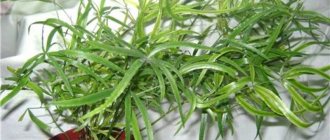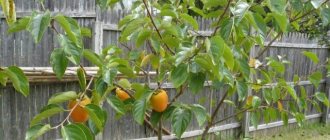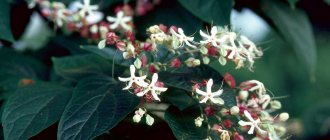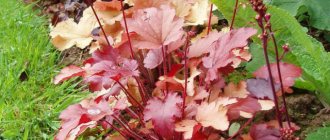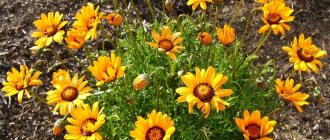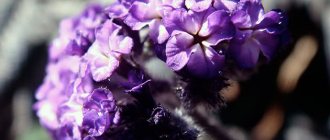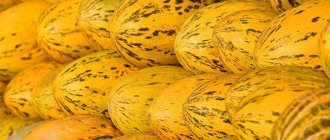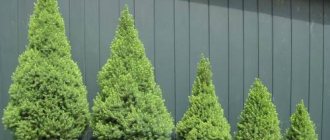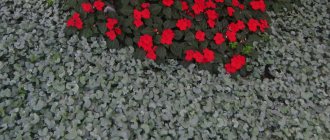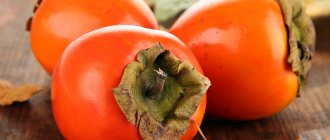Types and varieties of gerbera
Information about the types and varieties of Transvaal chamomile varies - according to some sources there are from 40 to 90. Every year, amateur breeders grow new varieties, hybridize and cross-breed known ones.
One of the plant classifications is based on external characteristics:
- multi-flowered;
- large-flowered with narrow petals;
- large-flowered with wide petals;
- semi-double;
- terry.
All garden gerberas known today were bred on the basis of two species - green-leaved and Jameson.
Some of the most popular varieties:
| Variety | Description | Leaves | Flowers / Flowering period |
| Jameson | Perennial, strong. The varieties Parade, Harley, Golden Serena are known. | Cirrus, with edges. Length about 20 cm. | Inflorescence diameter 10 cm. Friends! As part of our portal, we launched a book on how to make a lawn with your own hands. If this topic is interesting to you, then READ MORE>> 3 weeks. |
| Garden hybrid / Garvinea Sweet Dreams | Height up to 45 cm, bush diameter up to 40 cm. | Round, fleecy. About 15 cm. | Inflorescences with a diameter of 12-15 cm. On one bush there are up to 20 peduncles. Various colors. Mid-spring - early autumn. |
| Patio Klondike | Height and diameter up to 50 cm. | Elongated, serrated, 15 cm. | Single, tongue-shaped petals. Usually white or all shades of red. July - October. |
| Abyssinian | Bush height up to 45 cm. | Ellipse shape, bush height up to 45 cm. Width up to 14 cm. The edges are wavy or jagged, with a light fluff on the surface. | Single, tongue-shaped petals. Usually white or all shades of red. Spring - autumn. |
| Orange | A small bush with a powerful root system. | The leaf shape is elliptical, collected in a rosette at the base of the root. | Orange, red, pink, purple, deep scarlet, yellow. The middle of the inflorescence is black, dark purple. July - October |
| Wright | Used to create bouquets. | They can be in the form of lobes or feathers. The edge is wavy or smooth. | Red, orange, purple, yellow, pink. The center is yellow or snow-white. Spring - late autumn. |
| Vega | Selection from America. | Up to 50 cm long, narrow, with a slight edge. | Diameter is about 13 cm, stem height is up to 70 cm. The color of the petals is bright orange. July - October. |
The stem is not cut, it must be twisted or broken off, this provokes the growth of new flower stalks with large inflorescences. During the flowering period, caring for the plant should be the most active - you need to water it abundantly, regularly feed and remove dried petioles and leaves at the very base, and irrigate the entire bush.
Common varieties: description and photo
Let's look at the most common types of gerberas and their most common varieties, loved by gardeners for decorating elegant flower beds, balconies or verandas and, of course, as indoor potted flowers. The following is a description of some types and varieties of gerberas, as well as photos.
Mini
Varieties of gerberas with a low stem or, as they also say, dwarf ones . They will grow great in pots. The height of their stem does not reach more than 30 cm, and the size of the inflorescence is from 4 to 7 cm. They are elegant and look amazing.
That is why mini gerberas in plantings in some cases can be planted independently in flower beds. But combined with matching colors of flowers, they will also look great. A special feature of these gerberas is their ability to purify the air and enrich it with oxygen.
The most beloved varieties of these small gerberas.
Hammingbird
The variety is distinguished by dark green foliage . Its caps are bright yellow, scarlet or crimson. The edges of the foliage are wavy and deep green.
Happipot
It is distinguished by its multi-layered matte pink petals. The core is brown, and it is framed by protruding small pink leaves. Stem without leaves, light green.
Llios
This species makes it possible to grow flowers of various shapes and sizes. The color of the hats that appear before us is shown in all sorts of shades of orange, yellow, and light red.
Parade
A type of flower with characteristic yellow and orange petals and core. There are no leaves on the stem; it itself is light green in color.
Mix
These include types of gerberas with different colored heads: red, orange, yellow and pink. They are considered low growing and compact.
The most common variety is considered Festival - an annual plant suitable for growing indoors. Which pleases with its flowers from early spring to late autumn. The flower has needle-like petals with bright, pure tones.
Multicolored
Bred by selective breeding, characterized by multi-colored petals.
These include the following varieties.
Alliance
The variety's core consists of three colors : black, orange and soft pink. And the heads are yellow. The stem is bare, light green in color.
Doutzen
Their core is also three-colored: black, orange and hot pink. The inflorescences are lush, double, pale pink.
Hollywood
This variety is prized for its large double flowers. Their middle is yellow, but the petals closest to the center are deep pink, and the ends are soft pink.
Blue and blue
Blue gerberas do not exist in nature , but they can be obtained in an unnatural way, that is, through selection. This does not affect the condition of the flower itself.
The inflorescences of such gerberas consist of elongated petals with a yellow core, which makes them look like daisies, and thanks to this color, it acquires a peculiar exoticism. Due to their uniqueness, blue and blue gerberas are in great demand in flower shops.
Hybrid
This type of gerberas is grouped depending on the structure of the petals or inflorescences. They are distinguished from other varieties by the structure of the petals and basket. Hybrid varieties are bred from two South African varieties.
The most popular ones are presented below.
Festival
The flowers have rather large leaves located on a low stem. They are green in color and have wavy edges. The flower heads are large and double. Petals are medium wide. Their colors are light pink, dark pink, red, orange and yellow.
Alcor
A low-growing variety with narrow foliage and small inflorescences . The diameter of which is 8 cm. In most cases, pink and lilac.
Jupiter
These are reed flowers with needle-shaped petals. Mostly pink, yellow or orange. The leaves are wide, green in color with whitish patches on the outside.
Marx
The height of the stem is 65 cm. Large caps with several rows of wide petals bloom on it. Bright orange color.
Purple
Just like varieties of blue and light blue gerberas, they are not found growing wild in nature. The color purple was developed through selective breeding . This variety is grown mainly in greenhouses for making various bouquets.
Green leaf
The flower has special long jagged leaves, they are similar in appearance to the foliage of a dandelion. Only gerbera foliage has a harder and rougher surface. The heads are lilac in color with thin petals. In reed flowers, the caps stand on bare, rather high stems.
Sweet Surprise
This variety is unique with its deep lilac petals. The ends are light, and the core is orange-yellow. The leg is bare, light green in color.
Durora
Durora is a variety of gerbera that is grown in pots . It has a fairly long flowering period and is easy to care for. Her caps are semi-double, the average size is only 7-10 cm.
We invite you to get acquainted with the description of white gerbera and Jameson.
Winter care
Gerbera can withstand winter in the ground in the open air only in regions with a mild climate. Under other circumstances, it must be transplanted into an ordinary flower pot for the winter. Alternatively, you can overwinter the dug plant in the basement or any other cool place.
From mid-autumn to mid-spring (winter), using auxiliary light and an average temperature of 22˚C, gerberas continue to bloom. But you should not grow it without rest, because after 2 years, flowering will become sluggish.
In view of this, in December you should:
- Place the gerbera in a bright room;
- Reduce temperature to 11˚C;
- Limit watering.
Under these circumstances, a time of rest begins, which will continue until the end of the winter period. Please note that the winter period ends in mid-spring!
Conclusion: As you noticed, there is nothing difficult about growing gerberas. You just need to follow the above tips.
How to grow gerbera indoors
For indoor growing, dwarf species of Jameson's gerbera are chosen. They are sold in flower shops in bouquets. Having received an adult gerbera plant from seeds at home through seedlings, it is kept on eastern and western windows. On the south side it is shaded at noon. For better flowering, maintain a temperature of 22–24 ° C and try to avoid strong differences between day and night values.
At the end of flowering, the plant is moved to a cooler place. How to properly care for gerberas in winter? During the dormant period, the plant needs coolness and very moderate watering. In cold weather, the flower needs additional lighting.
Diseases of flowers and ways to combat them
All indoor and garden plants suffer from pests and various diseases. This is largely due to improper care, but there are also objective factors.
The most common problem is root collar rotting. It occurs as a result of excess moisture and when the plant is infected with fungal diseases. This disease can be prevented with moderate watering and good soil drainage.
Diseases such as root rot and gray rot are also common. Treatment requires treatment with special drugs.
In summer, at high temperatures, the flower is affected by powdery mildew. It is combated by treating plants with fungicides.
Among the pests that actively damage bushes and flowers:
- spider mites;
- thrips;
- aphid.
They take a liking to the plant and “squeeze” all the juices out of it, after which it turns yellow, fades and dries out. If these pests are detected, the flowers are treated with insecticides.
Constant observation and proper care will allow you to notice disturbances in the development of the plant in time and take all necessary measures to restore it.
As you can see, growing gerberas at home is a troublesome task and requires some effort, but is not impossible. Knowing the rules, even a novice gardener can grow a beautiful flower in the garden.
Flower transplantation and propagation
In order for a gerbera to bloom, all planting rules must be followed.
Gerbera Sadovaya planting technology
Particular attention should be paid to choosing a place for planting; it should be well lit, without drafts. The region should be taken into account when planting a flower.
In order for the gerbera to remain a perennial plant, the optimal climate will be with hot, humid summers and warm winters; in this case, the plant will simply need to be covered with leaves or straw for the winter
The region should be taken into account when planting a flower. In order for gerbera to remain a perennial plant, the optimal climate will be with hot, humid summers and warm winters; in this case, the plant will simply need to be covered with leaves or straw for the winter.
The best time for planting Gerberas in open ground can be considered mid-to-late spring, when the frosts have completely passed
In order for gerbera to bloom for many years, the soil must be saturated with: phosphorus, magnesium, potassium, manganese. If the soil lacks these elements, the flowers will be small or not bloom at all.
Drainage is required when planting. Watering must be done exclusively at the root of the bush.
If you sow the soil with seeds rather than seedlings, they will flower after 10 months. The flower itself is a box with seeds, which after flowering can be collected and sowed in the soil for the next year.
Step-by-step propagation indoors
Cuttings
To do this, you need to dig up a bush, wash it well, and then cut off the rosette. Then put it in a greenhouse, after a while young shoots appear on them, which serve as cuttings for planting.
Dividing the bush
Gerbera propagation scheme by dividing the bush
To do this, dig up a bush and divide it into separate components; each shoot must have at least 3 leaves. The rosettes should protrude from the soil by at least 1 cm.
Seeds
Propagating a plant by seeds is quite simple, but in addition to this, you need to know some features. As soon as the flowers fade, the seeds should be collected from them and then soaked, for this you can use gauze moistened with water. As soon as they swell and shoots begin to hatch from them, you can begin planting.
Step-by-step transplant
Replanting is not difficult for a knowledgeable gardener, but not for beginners, so it is worth knowing certain rules:
It is worth planting seedlings only after at least 3 leaves have appeared on them. Seedlings should be planted in late spring in warm soil.
It is necessary to remove seedlings for replanting with extreme caution so as not to damage the roots. After planting, the plant requires careful watering until the first flowers appear; after that, watering should be moderate.
Planting soil (transplantation)
The soil should be light, and therefore slightly acidic. Experts do not recommend using compost or humus as fertilizer. You can make nutrient soil yourself. To do this, you need to mix the following components:
- two parts of deciduous soil;
- 1 part peat;
- one part of sand or sphagnum moss;
- filler consisting of expanded clay and pine bark.
The most important condition is that the root rosette should protrude from the ground 1.5-2 cm higher. Transplantation should be carried out during the dormant period, when it does not bloom. Otherwise, you can disrupt its natural biorhythm. If such a beauty was given to the owner of a flowering plant, then there is no need to rush to replant it. In a small pot it can grow well for a long period.
It is recommended to replant gerberas in early spring or late winter. To do this, you can take a clay pot, the diameter of which is 2-3 cm larger than the previous one. This will allow it to bloom faster.
Garden gerbera: planting and care
The soil for planting should be slightly acidic (acidity - 4.5-5.5 pH). More acidic soil will delay root development. For an adult flower, a clay pot with a volume of 1-2 liters is suitable. To improve the quality, crushed pine bark or expanded clay is added to the soil. It is recommended to constantly loosen the top layer so that air can penetrate to the roots.
When transplanting from a small pot to a large flower, it will take quite a long time to get used to the new conditions. It is better to replant in the spring. You need to replant the plant together with a lump of earth, so it will begin to grow faster. A flower bought in a store should not be replanted immediately; it needs time to acclimatize.
Gerbera is a light-loving plant. She can even spend some time in direct sunlight, so she will be comfortable on the windowsill of a window facing west or east. In autumn and winter, it needs additional lighting, for which fluorescent lamps should be used. An abundance of sunlight can lead to a loss of brightness of the leaves, so the flower should be protected from the sun at midday. With excessive or insufficient light, flowering may not occur. With insufficient light and poor nutrition, the flowers will be pale and ugly.
Gerberas love warmth. Large differences in day and night temperatures negatively affect the development of inflorescences. In spring and summer, the optimal temperature will be 22-24°C (not lower than 20°C). Flowers like fresh air. Therefore, the room should be ventilated regularly. In summer, the flower should be taken out into the garden or onto the balcony.
Gerberas like frequent, but not heavy watering during growth. Overfilling should be avoided. The water in the pot should not stagnate. The rosette of basal leaves should remain dry. It is good to use a tray filled with moss, sand or expanded clay gravel for watering. Once every 2 weeks the plant is fed with mineral fertilizer. Organic fertilizers cannot be used, as they contribute to rotting of the root collar. Faded buds must be removed immediately so that they do not interfere with the development of new flower stalks.
In winter, when the flowering period ends, gerbera needs a temperature of about 15°C, but not lower than 12°C. Watering should be limited. The soil should dry out a little between waterings. No fertilizing is needed in winter.
Gerbera care
Gerbera is quite unpretentious in everyday conditions, but it needs a lot of light and a comfortable temperature regime. And be sure to regularly monitor humidity and its effect on the flower. Otherwise, if you maintain suitable conditions, gerbera does not cause any trouble.
Temperature
Ideal conditions during the active season are about 20-24 degrees Celsius. In winter, when the flower rests alone, it is enough to maintain 12-14 degrees. But make sure that the thermometer mark does not fall down, and avoid sudden changes from day to night. Otherwise, beautiful large basket flowers will lose their shape and decorative properties.
Lighting
Gerbera needs a lot of bright, but diffused light, so much so that during the season of active growth it often needs to be supplemented with lamps. In summer, be sure to shade the bush if it grows on the south side. The amount of light during the day directly affects the flowering and decorative properties of gerberas.
You can take the flowerpots outside, but accustom them to new conditions slowly, gradually extending the period of “walking”. If you plan to seriously engage in breeding, get a fluorescent lamp in advance for the fall.
Watering
Gerbera is watered with strictly warm water at moderate intervals. The guest from drought-prone regions was not used to large amounts of moisture. Moisten the substrate when it is completely dry from above, but under no circumstances flood the stem and leaves.
You cannot spray the rosette and petals of the gerbera, because this will cause it to rot. To ensure high humidity, place a bowl of water next to it or fill a tray with moistened expanded clay. In winter, this is not necessary, nor is regular watering - just make sure that the soil does not dry out completely.
The soil
The gerbera root must breathe, so the soil must first be loose. At the same time, thanks to this, water will not stagnate, because of which the root and beginning of the stem will rot. Take a mixture for any Asteraceae or combine leaf soil, sand and peat in equal amounts.
Fertilizers and fertilizing
Gerbera needs to be fed only when it is growing rapidly and is about to bloom. As in the case of soil, ready-made mineral mixtures for flowers are suitable, but periodically add magnesium sulfate. During cold spells or short-term frosts, be sure to add phosphorus.
Transplantation and propagation
There is no need to constantly replant your gerbera, so carry out the procedure only as it grows and is necessary. You need very high-quality drainage so that all excess water drains through it. You cannot immerse a leafy rosette in the ground - it should not be exposed to any form of soil at all.
Gerbera is sprouted from seeds, but then you will need fertile soil with turf and humus. Seedlings dive when they have the first 2-3 full-fledged leaves, and then again at the 5-6th leaf. For the second picking, you can already take separate pots.
The most convenient way to propagate gerberas is by division, especially if it is a decorative variety. This is the only way to fully preserve all the characteristics of the parent plant. Choose a large bush at least three years old, divide it in the spring and so that several sprouts diverge from each share.
Care
Garden gerbera is a beautiful plant, widely grown on an industrial scale. A little capricious, but proper care and the desires of the gardener allow you to grow this beauty in home flower beds.
If we take into account the fact that seedlings have already been obtained from seeds and planted in open ground, then we will dwell on how to care for an adult plant.
The first point is the rules of watering. The water should be warm and soft. Watering must be done from a special watering can so that the flow is dispersed and does not expose the root system, directly under the root. Quite often and a lot, the flowers are watered until the first flowers appear, then the amount of water is reduced to a minimum.
Winter care. Gerbera is a perennial plant grown from seeds and planted with seedlings in the ground, which can delight you with its abundant flowering for several years. If the winters are not too frosty, then the dried stems are cut off at a level of ten centimeters from the ground, and the bush is covered with dry leaves or straw. However, you need to take care of such shelter, since during warm winters the bush may become underwater. In severe frosts, flowers should be dug out of the ground and planted in pots and allowed to overwinter indoors.
Bright flower.
Dig up flowers along with a small amount of soil; this minimizes damage to the roots. The bushes are stored in a bright room with constant ventilation. The air temperature should not be lower than six degrees Celsius, but not higher than ten.
When replanting the bush into a pot for storage, the root collar is left not covered with soil, this protects it from rot.
Illumination of the place. A well-lit part of the garden or flower garden is suitable for gerberas. In the shade, the plant stretches out and produces not very large inflorescences.
Caring for flowers at home requires regular feeding of the plants. Saturated soil, rich in minerals, will allow you to achieve maximum results in growing large, beautiful flowers throughout the summer. For feeding, they use not only purchased products, but also a self-prepared solution of cow manure and mineral fertilizers. To do this, the manure is first kept in water for seven days, then it is mixed with mineral fertilizers. Thus, a concentrated mixture is obtained. Water the flowers with this product in the proportion: 1 part of the mixture and 5 parts of water, no more than once a month.
It is not recommended to cut flowers; they need to be broken out of the nest, since the remaining part may begin to rot, thereby damaging the entire plant.
Diseases and pests
This unpretentious plant is very susceptible to various diseases. To prevent diseases during planting, the soil must be treated with special preparations.
Rotting of plant roots is common, which is caused by fungus or overwatering. For prevention, drainage is improved and the irrigation regime is observed.
The gray rot that appears is destroyed with special preparations. They can be purchased at any flower store. Flowers must be processed carefully; getting the product on the leaves causes unsightly spots.
A disease such as powdery mildew mainly affects the flower in the summer heat at elevated temperatures. They fight this disease using appropriate fungicides or sulfur-containing preparations.
Pests such as aphids and spider mites are diseases that can cause the death of a plant. Signs of their appearance will be yellowing of the gerbera and its wilting. In this case, the plant should be saved with insecticidal special preparations.
Growing technique
In general, gerbera is an unpretentious plant that grows well in open ground. However, for good growth and abundant flowering, a number of conditions must be observed.
The soil
Gerbera prefers slightly acidic and well-drained soils. Since the plant is prone to root rot, it is advisable to carefully evaluate the substrate before planting and, if necessary, replace it with a suitable one. For additional safety, a thick layer of gravel can be poured at the bottom of the planting container or hole, which will ensure the drainage of excess moisture.
Temperature
The plant can be grown outdoors in areas characterized by a mild climate. However, even if the wintering climate is suitable, it is always a good idea to cover the roots and stem with a mulch consisting of leaves, manure and straw. In colder regions, before the first frost, the plant is removed to a warm room where the temperature does not drop below 5-7 °C.
Gerbera prefers sunny and well-ventilated places. However, in regions with very hot summers, it is best to place them in partial shade, as strong sun can cause leaf scorch and pests such as spider mites.
Watering
Watering should not be too frequent or abundant. If you water too often or too much, your gerbera will become vulnerable to root rot. To avoid water stagnation, drainage is used or the frequency of watering is reduced. In general, gerberas grow best in dry climates, so growing them in mountainous or very humid areas may end in failure.
Fertilizer
To get a long flowering period, it is advisable to apply liquid flowering plant fertilizers high in potassium and phosphorus every 15 days.
Pruning
During the growing season, it is enough to remove faded flowers and leaves. If the plant is grown outside, then at the end of autumn seasonal cleaning of the dried parts of the plant and subsequent mulching are required for better wintering.
Reproduction methods
There are three ways to propagate and grow gerbera. Let's look at them.
Seminal
This is the easiest way, but sometimes it doesn’t work out because the gerbera seeds don’t germinate well. For successful planting, it is recommended to use only fresh gerbera seeds . The most suitable time for sowing seeds is spring.
Sowing seeds is quite simple: seeds are laid out in the damp soil of a plastic container, placed on top, sprinkled with dry soil and sprayed again. Be sure to place it under a lamp.
Important : Tall types of gerberas are grown in open ground.
When the flower has 2-3 leaves, it is necessary to carry out the first picking . The next picking is done in the 5-leaf phase, but in separate pots. Feeding begins a month after planting in different pots (read more about growing gerbera from seeds here).
Watch a video about growing gerberas from seeds:
Division
Allows you to make a large number of young plants from one adult. This has a beneficial effect on the adult gerbera, acquiring a second youth and continuing to grow and develop. The optimal age of a gerbera suitable for division is considered to be 4 years old.
This procedure is carried out in the summer. When the plant has finished blooming, you need to carefully remove it from the flower pot, shake off the soil and divide it into parts using a knife.
Each piece should consist of a couple of leaves, part of an underground shoot and part of a root. Roots that are too long are trimmed, leaving 10-15 cm in length .
Cuttings
Used very rarely due to low efficiency. A part of the stem with a leaf is cut off and planted in a separate box with soil at a temperature of at least 20 degrees.
Popular varieties of garden gerberas
There are not as many varieties of this flower as varieties, but they form the basis of choice for the gardener. Their description and characteristics make it possible to determine whether the plant is suitable for cultivation in certain conditions, and what agricultural technology features it has. After all, gerberas in the garden, growing and caring for which require certain skills, can bring not only aesthetic pleasure, but also certain troubles.
Gerber Jameson
This species is actively grown not only in the garden, but also indoors. The bush is strong, the foliage is pinnate, collected in a rosette. The peduncle is not very tall. Externally, the flower looks like a daisy.
Gerbera Jameson is suitable for growing both in the garden and in the room
The diameter of the cap reaches 10 cm. The flowering period lasts 3 weeks. The colors are attractive and bright.
Hybrid species Garvinea Sweet Dreams
This species is one of the new products presented to the attention of gardeners. The height of the bush reaches 0.45 m, its diameter is 0.4 m. Each gerbera simultaneously produces up to 20 flower stalks.
Garden gerbera Garvinea Sweet Dreams blooms from spring until autumn
The color range is rich. The flowering period lasts from spring until autumn frosts.
Klondike
A large plant with a bush height and diameter of about 0.45 m. During the season, each plant forms up to 50 peduncles. The variety of shades is huge.
Klondike is distinguished by its large bush size and abundant long-lasting flowering.
The flowers are semi-double, their diameter reaches 12 cm. The flowering period lasts from July to October.
Abyssinian
The basal rosette of this perennial consists of elliptical leaves. A characteristic feature is that the young foliage has slight pubescence.
Abyssinian gerbera has a delicate color scheme
The flowers are reed-type, most often painted white, sometimes with reddish tints.
Gerbera orange
The rosette of the flower consists of elliptical leaves. The bush is of small height, the rhizome is thick. Basket-type inflorescences are painted in the following colors:
- orange;
- bright red;
- pink;
- dark scarlet;
- yellow.
Orange gerbera is distinguished by its compact bush size and bright flower color.
The middle flowers are sometimes painted black or dark purple.
Gerber Wright
The rosette of this species consists of pinnate or lobed leaves. The peduncle is long, at the end of it a flower is formed that looks like a large chamomile. Its middle is yellow or white. The color of the petals can be:
Gerbera Wright is characterized by a rich range of colors
- red;
- orange;
- purple;
- yellow;
- pink.
Gerbera Vega
This species was bred by American breeders. It differs from other varieties in its large inflorescences, which reach 13 cm in diameter, and narrow long petals.
The Vega hybrid has very large flower sizes.
The length of the peduncle is about 0.7 m. The color of the flowers is yellow-orange.
What kind of gerbera flower is it?
Gerbera is a flowering plant native to Africa. It is also called daisy and Transvaal daisy. Gerbera is grown both indoors and in open ground. Beautiful bouquets are collected from it.
Terry gerbera looks very beautiful
Character traits:
- The flower stalks are unremarkable. They have no leaves and are up to 60 centimeters long.
- Bright gerbera flowers look like a field chamomile, but their petals are denser and have many shades. Depending on the variety, the diameter of the flowers varies. There are very small ones, not exceeding 4 centimeters, others grow up to 15.
- The lush green leaves are quite long and form a rosette at the roots.
Additional Information! In the language of flowers, gerbera is a symbol of beauty and innocence. According to legend, the name of Coat of Arms was borne by a young charming girl who captivated everyone with her appearance. She was so tired of attention that she decided to take the unthinkable step - she turned into a flower.
Varietal diversity
To achieve success in growing a plant, it is worth choosing the right variety and providing it with adequate care.
Jupiter
This variety is characterized by a pleasant aroma and a long flowering period. The plant is characterized by long and narrow petals, which is why it looks like a chamomile. The stem reaches 70 centimeters.
Alcor
This variety is characterized by a rich cherry hue. The plants are decorated with small flowers. The bushes reach a height of 50 centimeters.
Migar
This is a narrow-leaved plant that has large flowers. It is decorated with narrow long petals that diverge in different directions. The flowers are bright pink.
This variety is characterized by rich red inflorescences, which have excellent decorative properties.
ALGOL
This is a fairly tall crop, reaching a height of 70 centimeters. The flower reaches 13 centimeters in diameter.
Durora mix
This variety is characterized by a variety of colors. The culture is distinguished by large inflorescences and short stems.
Elegance
This variety is characterized by a yellow color. There are also pink varieties of the variety. The culture has strong roots and elongated leaves.
This plant is characterized by champagne-colored petals.
Types of gerbera with photos and names
Gerber Jameson
It blooms most of the year, reaching a height of 60 cm. It has large chamomile-shaped flowers and leaves measuring 10-15 cm. Most often it comes in white, cream, pinkish, crimson, red and yellow-orange colors.
Gerbera Mini
Such gerberas are widely used in floristry, due to the variety of flower colors and miniature sizes: inflorescences with a diameter of no more than 5-7 cm, stem length up to 30 cm. These flowers are often bred at home as potted plants.
Gerbera varieties
Currently, more than 70 varieties of gerbera have been bred, each of which has a unique color. The most common are:
- Orange gerberas. These varieties are: “Orangina”, “Sweet Caroline”, “Sweet Honey”
"Orangina", "Sweet Caroline", "Sweet Honey"
with a middle of lemon shades and varying degrees of coloring of the petals.
- Pink gerberas. The most popular varieties are: “Jasmina” with white splashes and a yellow core, “Sweet Surprise” with an orange center, “Pam” - a brownish core framed by bright pink petals.
"Jasmina", "Sweet Surprise", "Pam"
- Red gerberas. The most memorable: “Sweet Glow” - a brick shade of flowers, “Rachel” - scarlet petals combined with greenish - pink-red inflorescences with a light core.
"Sweet Glow", "Rachel", "Sophie"
- White gerberas. Among them, the most famous are: “Valerie” - a cream shade with a pink undertone, “Catherine” - needle-shaped petals and yellow - in appearance they practically copy chamomile inflorescences.
"Valerie", "Catherine", "Sylvana"
How does gerbera propagate in open ground?
There are several proven ways for gardeners to propagate garden gerberas on their own.
Germination of seeds
Gardeners say the main disadvantage of this method is that it is not possible to preserve the varietal qualities of the mother plant. The new flower changes color, size and other important characteristics. Therefore, to obtain gerbera with already known and desired characteristics, it is better to purchase seed material from trusted stores.
Attention! You won’t be able to collect hybrid seeds yourself; you must purchase them from producers. Plants grown from seeds will delight you with their first flowering only after 10-11 months
For sowing, you will need to mix 2 parts of turf, 1 part each of humus and leaf soil, as well as coarse sand. Low elongated pots equipped with drainage holes are used as containers.
Plants grown from seeds will delight you with their first flowering only after 10-11 months. For sowing, you will need to mix 2 parts of turf, 1 part each of humus and leaf soil, as well as coarse sand. Low elongated pots equipped with drainage holes are used as containers.
Picture 15 Seeds for growing should only be purchased in trusted stores
Gerbera seeds are planted to a depth of 0.2 cm. It is even better to simply spread them on pre-moistened soil and sprinkle a little dry soil on top. After this, the vessel must be covered with glass or cellophane. This condition must be met for successful seed germination. After 10 days, shoots should appear. When the seedlings form 3-4 true leaves, they can be planted in separate pots.
Rooting cuttings
When using this technique, it will not be possible to obtain a large number of seedlings, but the varietal characteristics will fully correspond to the mother plant. In addition, young gerberas will have high growth potential. To root the plantings, you will need to create special conditions, namely maintaining a constant temperature and high humidity.
Rooting cuttings allows you to preserve the varietal qualities of the mother plant
A gerbera bush is dug up, the leaf rosette is cut off and the roots are planted in a greenhouse. After a couple of weeks, shoots will begin to grow from the air buds, which will serve as material for future cuttings. As soon as at least 2 leaves are formed on the shoots, they are carefully cut off so that the length is about 1 cm. After this, the cuttings must be planted in a nutritious soil mixture of peat, river sand and perlite.
Attention! To root gerbera cuttings, it is necessary to maintain the temperature at +24°C. After 2 weeks, roots form on the cuttings, but they can only be planted in separate pots after a month
After 2 weeks, roots form on the cuttings, but they can only be planted in separate pots after a month.
How to grow gerbera in a flowerbed
Growing gerbera in the garden and caring for it is simple and exciting, but requires compliance with the conditions necessary for long and lush flowering.
In the south of Russia, gerbera blooms from spring to autumn and winters without shelter without any problems. In the middle zone, flowering will be more modest, and for the winter the gerbera will have to be dug up and stored with a lump of earth in a cool, dry place.
Planting gerberas
Planting garden gerbera and its subsequent care begin at the end of winter. The plant is grown in seedlings. Seeds are sown in seedling containers from January to March in a mixture of garden soil with sand and compost. The seeds are planted very shallowly, only lightly sprinkled with soil. Shoots, as a rule, are unfriendly and appear after 10–12 days.
After several true leaves appear, the sprouts are planted in boxes or immediately in separate pots. For seedlings, choose the lightest window sills. Caring for seedlings involves regular moderate watering. When watering, water should not get into the root rosette, as the plant easily rots. Excessively abundant watering threatens the appearance of thrips on the surface of the earth. In this case, the watering rate is reduced, both the plant and the soil surface are treated with Fitoverm.
Care for gerbera in open ground
Gerbera seedlings are planted in open ground after the threat of frost has passed. This usually happens in the second half of May. Choose a sunny place for planting. The best soil for them is light, drained, with inorganic fertilizers added. If there is an excess of organic matter in the soil, the flower stalks become very elongated. Fading inflorescences must be removed promptly. This stimulates the appearance of new ovaries. During active growth and flowering, the gerbera is watered abundantly, preventing water from entering the rosette. After flowering, the soil is moistened only after the earthen clod has dried.
In autumn, gerberas are covered or dug up with a clod of earth. The shelter is made dry and ventilated so that the flower does not rot during the thaw.
In the spring, the gerbera is transferred to a pot of suitable size, moved to a warmer and brighter place and watering is increased. At the end of April - beginning of May, an adult plant is planted in open ground.
Possible problems when growing gerbera
When growing gerbera in a summer cottage, a gardener may encounter a number of problems. Knowing the cause of difficulties with the growth and flowering of perennials, it is easy to find solutions.
| Problem | Causes |
| Gerbera doesn't bloom | Excess nitrogen, too long daylight hours, violation of wintering conditions, few leaves in the rosette |
| The plant dries, turns yellow, withers | Excess or lack of moisture, lack of minerals in the soil, damage by fusarium, leaf pores clogged with dust and dirt |
| Leaves turn black | Cold water for irrigation, excessive moisture or, conversely, drought, low air temperature |
| The buds are withering | Little light, sudden temperature change |
Errors in agricultural technology
When planting gerbera seedlings in an open flower garden, you need to avoid common mistakes in agricultural technology:
- watering with cold, unsettled water;
- use of organic or chloride fertilizers;
- covering the root collar with soil during picking;
- landing in a shady, swampy place.
Growing gerbera in open ground is not a very difficult process. The main thing is to provide them with proper care and take into account all the nuances of wintering. These flowers will bloom long and profusely, decorating a flower bed, balcony, terrace or veranda.
Description of garden gerbera. Varieties of culture
One of the nicknames for this flower, which looks like a large daisy, is “South African sun”. In Africa, gerbera is a perennial with several months of flowering. In the cool climate of Russia, it is grown as an annual or transplanted into a warm room for the winter. Tall varieties of gerbera are very popular among those who grow flowers for sale.
Characteristics of gerbera:
- stem height - up to 30 cm;
- leaves are thick, light green, collected in a rosette under the peduncle;
- flowers - 12–15 cm in diameter, double or non-double;
Gerbera flowers can be of different shades
- flower color - various shades, except blue;
- the size of the petals depends on the variety; they are usually oval in shape;
- branched root system;
- After flowering, seed pods are formed on the plant, in each of which up to 500 seeds ripen.
Attention! An individual gerbera flower blooms and fades within a month. The total flowering period of the crop is 3 months.
During this period, one bush forms up to 20 buds.
There are about 80 varieties of gerberas in nature. There are many tested and well-proven varieties: both for the southern and cool northern regions. In garden conditions, dwarf species, which are the most unpretentious in care, take root well. But if you want to grow tall, handsome beauties, try the Jameson varieties. In the middle zone they also plant Mars, Alcor, Jupiter, Iskra, Kalinka, Delios, Lancaster, Romeo, etc.
This is interesting: Cinquefoil shrub - cultivation and care
Features of growing gerbera from seeds
There are two ways to propagate gerbera:
- vegetative (that is, by dividing the bush, cuttings);
- seed (sowing seeds for seedlings in open ground).
Growing flower crops through seedlings is a very popular method of propagation. However, gerbera specifically has some peculiarities: the fact is that when sowing seeds, there is a wide variation in external characteristics (that is, maternal characteristics may not be preserved). But if at the stage of growing seedlings you select the best plants, then the flower garden will undoubtedly please you. Also, the seed propagation method has its advantages:
- with proper planting and care, you can grow strong, strong and healthy seedlings;
- you can get many plants in one season;
- you will spend less, because planting material is quite inexpensive.
Vegetative propagation (that is, the restoration of a whole plant from individual parts of the mother plant) repeats the properties of the mother plant, this is a significant advantage of the method. However, this method of reproduction requires more effort and time.
Gerberas are perennial flowers. However, in cold winter conditions they can easily die, so they are often grown as annuals. But if you want to grow plants as perennials in cold regions (Siberia, the Urals), you need to dig up the rhizome for the winter and store it in the basement until spring.
Planting, growing and propagating gerberas
There are three ways to propagate a plant:
Reproduction by seeds. This method is most relevant in early spring. To plant a gerbera, you need to soak the seeds and spread them on the soil, after sprinkling it with sifted sand. The soil should be slightly moistened with water at room temperature. After which, the seeds are covered with film or glass and placed in a warm place, away from direct sunlight. A week after planting, the seeds begin to germinate and with the appearance of the first leaves, the plant must be planted in special containers. When the sprouts get stronger and about four to five leaves appear, they can already be planted in a permanent place. Dividing an adult bush. For this, it is better to choose three or four year old plants. This method is suitable for propagating particularly valuable or rare species of gerberas. Thus, maternal characteristics are preserved, which are lost during seed cultivation. This method is more common for propagating flowers at home. The division of the plant is carried out in early or mid-summer. In the pot, the top old layer of soil is removed, exposing the upper part of the rhizome. An incision is made on it, which is sprinkled with a small amount of finely crushed charcoal.
After that, a new layer of soil is placed in the pot and placed in a bright place. After three to four weeks, the plant can be removed from the pot and carefully, dividing the new grown roots into two parts, transplanted into different containers, slightly larger than the previous ones. Cuttings. It is much more difficult to manipulate flowers at home.
This method is used in the spring, before the plant begins to actively grow. For cuttings, use healthy plants, no older than three years. Ready cut gerbera cuttings are placed in warm, moist soil prepared for this, and covered with glass. Within a week, new shoots are already appearing, which are planted in pots, resulting in new plants.
The use of gerbera in landscape design
A variety of garden gerbera flowers brightly color the garden and surrounding area.
It is planted along paths as a border, using single-color bushes or combining different tones.
Gerbera grown in garden pots or special containers is placed on balconies, verandas, and terraces. Thus, it is used as a portable decorative element.
This plant looks great both in single and mass plantings, and in combination with other flowers. Typically, pansies, bells, poppies, calendula, gentian, salvia, bidens, heuchera, cereals and conifers are chosen for this. And cut flowers in a bouquet will charge you with energy for almost a month.
Care after flowering
After the gerbera has given all its strength to flowering, it should be prepared for winter.
How does it winter in the south?
Only mild winters can guarantee normal wintering of gerberas in open ground. But this does not mean that the plant does not need shelter.
- After the gerberas have bloomed, you should remove all flower stalks, reduce watering and completely stop fertilizing.
- At the end of September, the root zone should be covered with a thick layer of fallen leaves or straw. But be careful, leaves should only be collected from healthy plants.
- An excellent way to store perennial plants is in a plywood box or a box made of very thick cardboard.
- With the arrival of spring, on sunny days, try to lift the boxes to gradually accustom the plant to natural conditions. With the onset of stable heat (10°C), the shelter is removed.
In the southern regions, gerbera is one of the most popular plants for landscape design.
Wintering in central Russia
In this climatic region, gerbera is grown as an annual plant. But you must admit, it’s a pity to treat a flower this way, which can delight you with its beautiful blooms for many years. Therefore, to grow gerbera as a perennial, it is necessary to move it to suitable conditions for the winter. To do this, the plant is dug up along with a lump of earth and moved into suitable containers. Storage conditions should be as follows:
- ventilated basement with stable temperature and low humidity;
- temperature 10 – 12°C, but not higher than 15°C;
- very infrequent watering and lack of fertilizing.
You can also place a pot of gerbera in the greenhouse. If there is no basement or greenhouse, use the coolest corner of the apartment, where there is no bright light. In such conditions, the plant will be able to rest until spring, so that at the beginning of the new season it will delight with lush flowering.
If you don’t want to annually transplant your gerbera from the flower garden to a pot for wintering and back, use a container in which the flower will be comfortable throughout all seasons. From spring to autumn, the plant will delight you with flowers outside, and for the winter you can put it away in a suitable place for relaxation.
In the conditions of central Russia, gerbera can also be grown outdoors, but it will have to be provided with more comfortable conditions for the winter.
